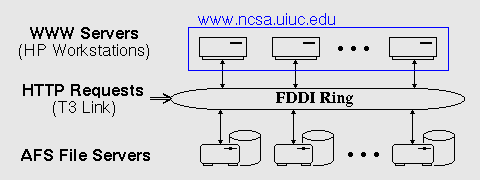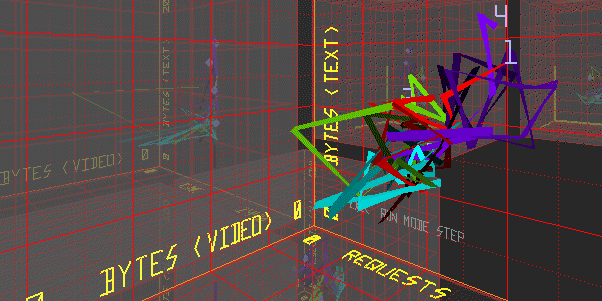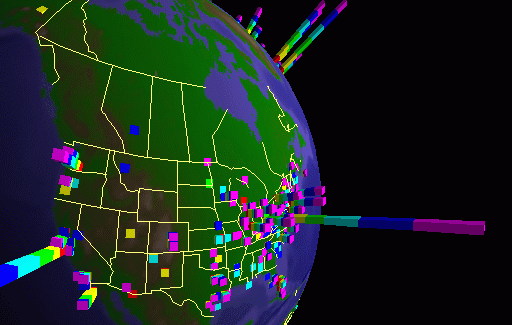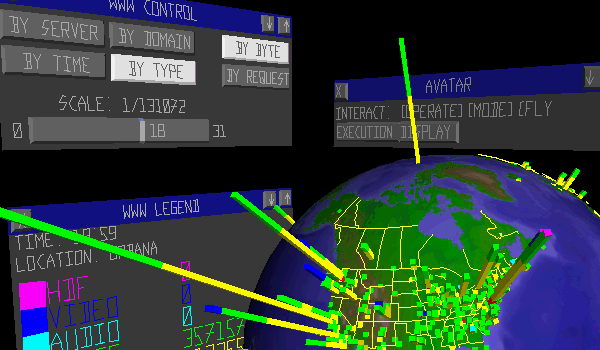NCSA WWW Server Architecture
On an average weekday, NCSA's WWW server receives roughly 400K requests, each of which is recorded with ancillary data describing the transaction. At current request rates, these log files grow by over 50 megabytes per day. In addition to the standard server request logs, NCSA also records operating system and network performance metrics. Together, the access logs and the server performance metrics permit analysis of server stimuli (access patterns) and server responses.Via statistical analysis and our virtual reality tools, we have identified server bottlenecks and typical user access patterns [10,11]. As a context for discussion of our data analysis and visualization experiences, we first describe the architecture of the NCSA WWW server and provide a more detailed description of the recorded performance data.

Figure 1: Real-time data collection and analysis architecture









 Stephen Lamm expects to graduate in May 1996 with an MCS from the
Department of Computer Science at the University of Illinois,
Urbana-Champaign, where he has worked on the analysis of dynamic
performance data from massively parallel systems using virtual
reality. After graduation, he plans to work for Netscape
Communications in Mountain View, California. Current research
interests explore. Lamm received a BS degree (magna cum laude)
in Computer Science from the University of California, Irvine in
1994.
Stephen Lamm expects to graduate in May 1996 with an MCS from the
Department of Computer Science at the University of Illinois,
Urbana-Champaign, where he has worked on the analysis of dynamic
performance data from massively parallel systems using virtual
reality. After graduation, he plans to work for Netscape
Communications in Mountain View, California. Current research
interests explore. Lamm received a BS degree (magna cum laude)
in Computer Science from the University of California, Irvine in
1994.